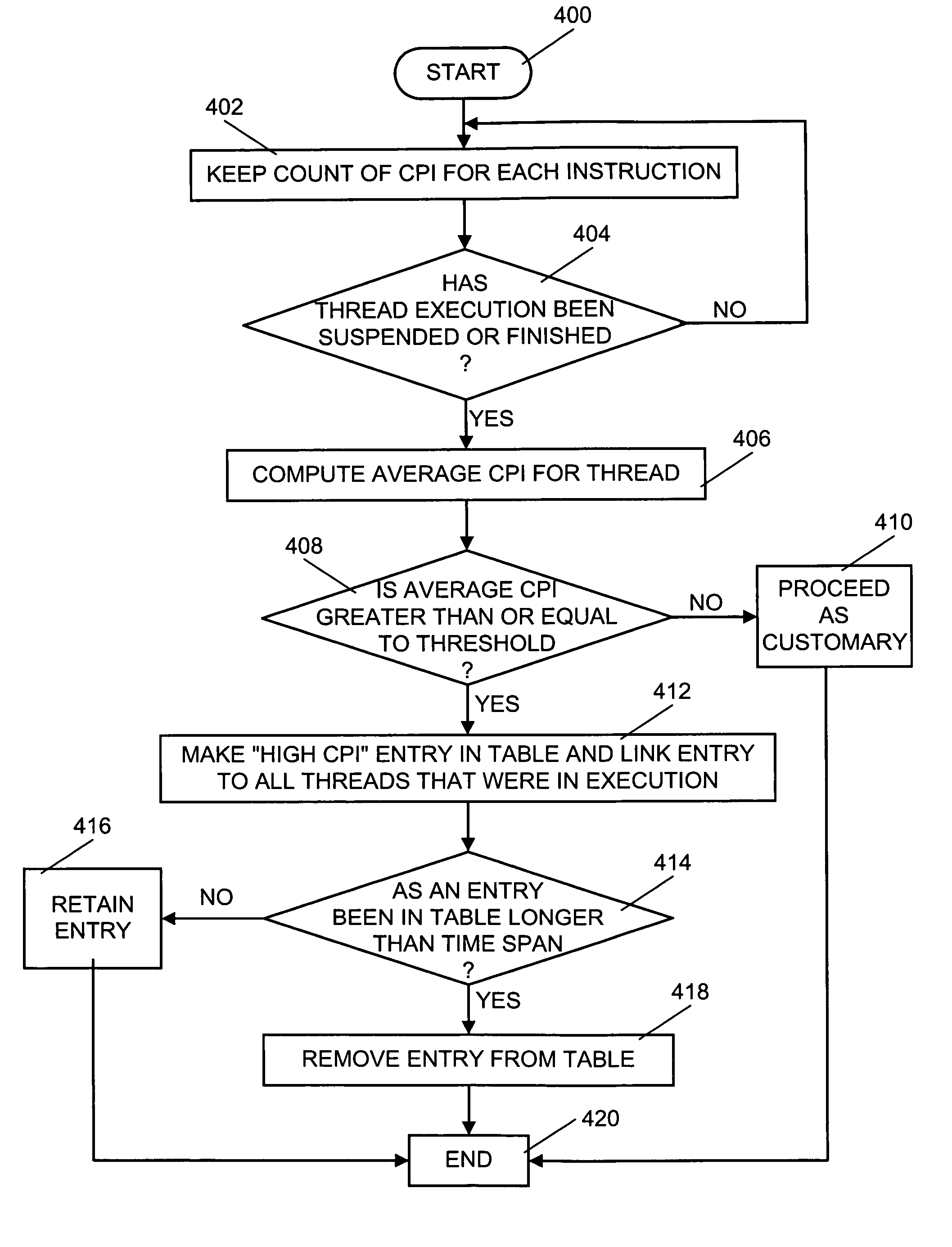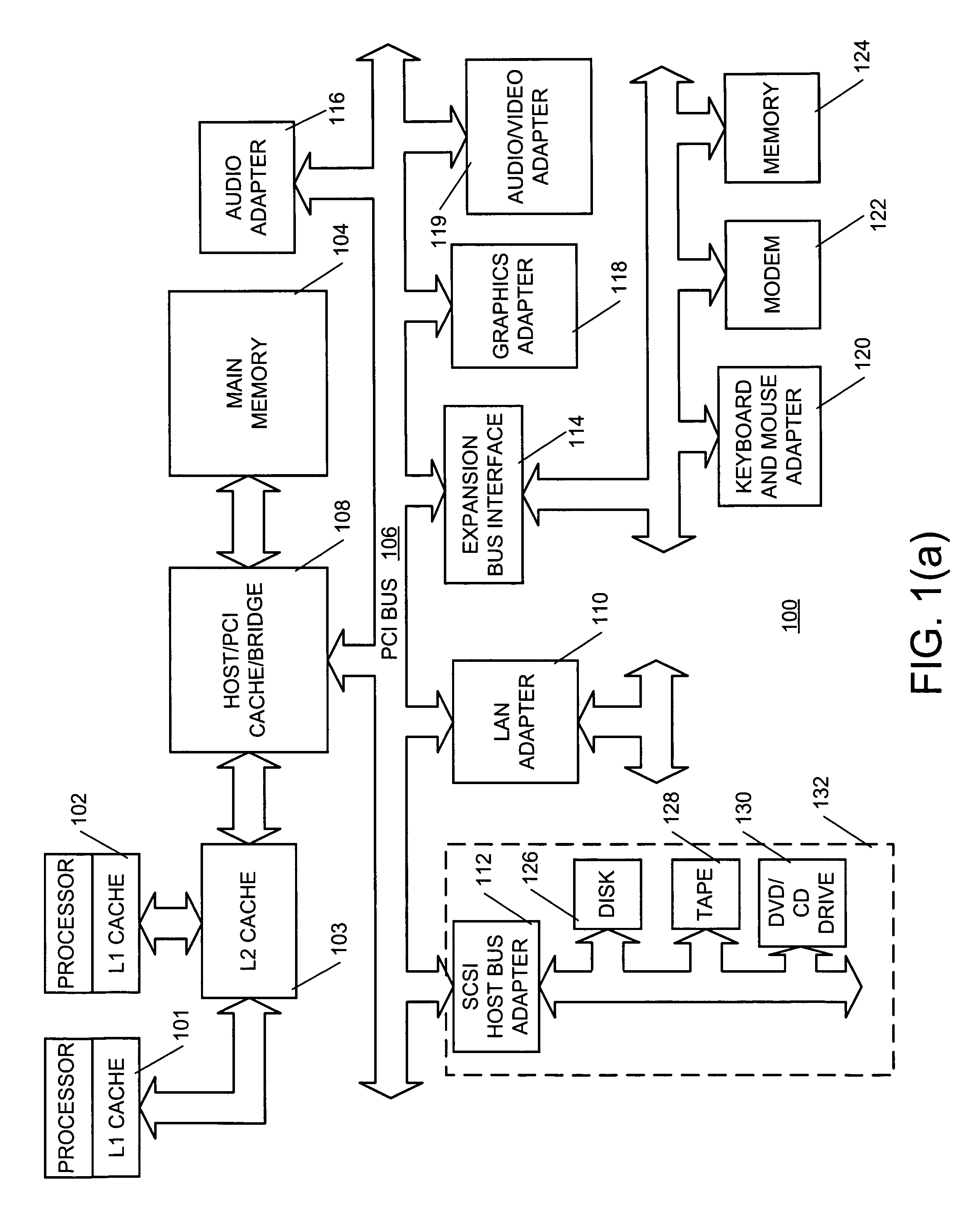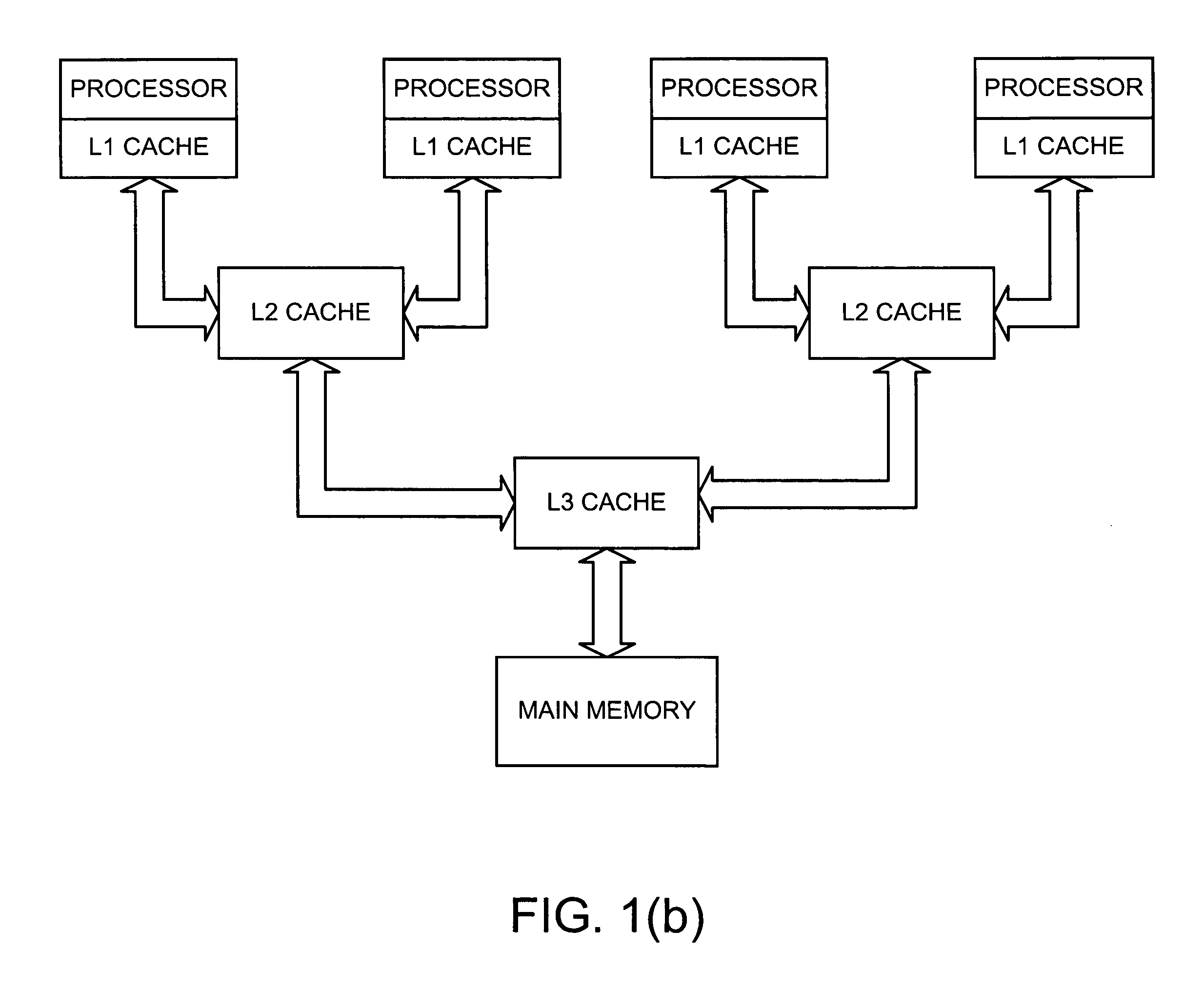System, application and method of reducing cache thrashing in a multi-processor with a shared cache on which a disruptive process is executing
a multi-processor, shared cache technology, applied in the field of process or thread processing, can solve the problems of large cache footprint, large cache footprint, and adversely affecting the performance of such systems, and achieve the effects of reducing cache thrashing, large cache footprint, and poor cache affinity
- Summary
- Abstract
- Description
- Claims
- Application Information
AI Technical Summary
Benefits of technology
Problems solved by technology
Method used
Image
Examples
Embodiment Construction
[0019] With reference now to figures, FIG. 1a depicts a block diagram illustrating a data processing system in which the present invention may be implemented. Data processing system 100 employs a dual chip module containing processor cores 101 and 102 and peripheral component interconnect (PCI) local bus architecture. In this particular configuration, each processor core includes a processor and an L1 cache. Further, the two processor cores share an L2 cache 103. However, it should be understood that this configuration is not restrictive to the present invention. Other configurations, such that depicted in FIG. 1b, may be used as well. In FIG. 1b each one of two L2 caches is shared by two processors while an L3 cache is shared by all processors in the system.
[0020] Returning to FIG. 1a, the L2 cache 103 is connected to main memory 104 and PCI local bus 106 through PCI bridge 108. PCI bridge 108 also may include an integrated memory controller and cache memory for processors 101 and...
PUM
 Login to View More
Login to View More Abstract
Description
Claims
Application Information
 Login to View More
Login to View More - R&D
- Intellectual Property
- Life Sciences
- Materials
- Tech Scout
- Unparalleled Data Quality
- Higher Quality Content
- 60% Fewer Hallucinations
Browse by: Latest US Patents, China's latest patents, Technical Efficacy Thesaurus, Application Domain, Technology Topic, Popular Technical Reports.
© 2025 PatSnap. All rights reserved.Legal|Privacy policy|Modern Slavery Act Transparency Statement|Sitemap|About US| Contact US: help@patsnap.com



